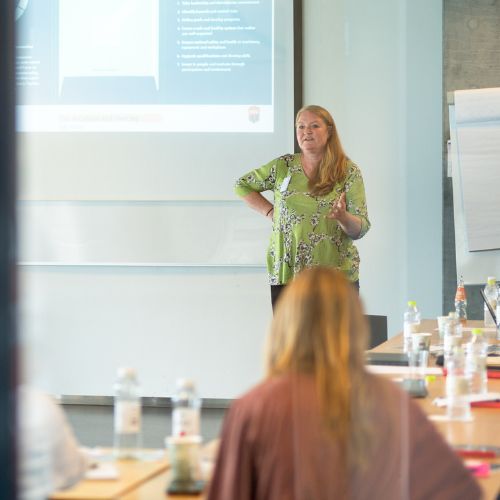
16 key takeaways from the Vision Zero Conference 2025
On 9 April 2025, we once again hosted the Vision Zero Conference at Hotel Nyborg Strand. We have gathered some of the key takeaways from the day here – insights and perspectives shared by our external speakers. Use them as inspiration for your occupational safety and health initiatives and as part of the ongoing journey towards a higher level of prevention in your organisation.
#1
Start with a clear strategic direction and apply the Vision Zero mindset to embed prevention, care and accountability into your organisational culture. Use it not just as a method, but as a shared language for change.
#2
Ensure top management takes visible ownership of the safety agenda. Leadership commitment must be more than words and you need to demonstrate it through consistent action and presence.
#3
Lead by example at all levels – integrate safety into every operational and strategic decision, and act as a role model for the behaviours you want to see.
#4
Treat safety as a shared responsibility and make sure to move beyond compliance and create a culture where everyone feels responsible for preventing harm. What you tolerate becomes your culture.
#6
Accept that cultural change takes time which is why you need to stay patient, persistent and consistent. Culture is built through everyday actions, not one-off initiatives.
#7
Build motivation and ownership across the organisation and involve employees, communicate clearly, and make it meaningful for everyone.
#8
Develop leadership training that is practical, relevant and tailored to the real-life challenges your leaders face. Equip them to lead safety, not just manage it.
#9
Invest in your health and safety organisation and build competencies in change management and the psychological working environment.
#10
Embrace the evolving role of the EHS professional and shift from technical specialist to strategic development partner who drives long-term cultural change.
#11
Structure your health and safety efforts to support collaboration and wellbeing – especially during times of organisational change, where clarity and trust are essential.
#12
Align initiatives across departments and ensure shared understanding, clarify expectations, and develop common competencies to support a unified approach.
#13
Combine multiple efforts into a coherent strategy and avoid relying on isolated actions. Think holistically and ensure that initiatives reinforce each other.
#14
Define clear, meaningful KPI’s for safety culture and proactive behaviour and follow up regularly to track progress, learn and adjust.
#15
Measure psychological risk levels and assess the maturity of your preventive culture and use data to guide your efforts and prioritise where it matters most.
#16
Make documentation simple and accessible and implement systems that support your safety work and reduce administrative friction.




